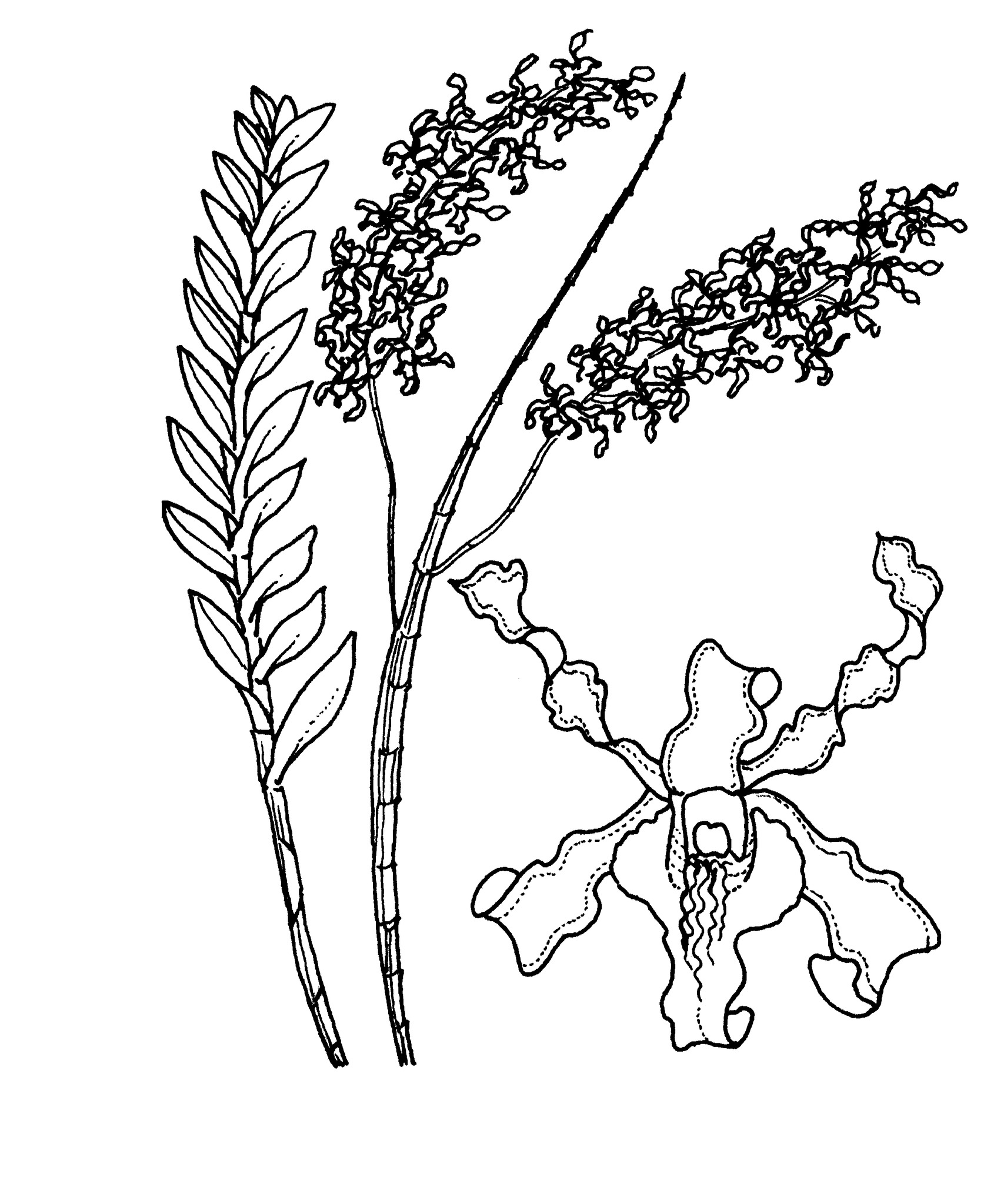
Robust epiphyte or epilith. Pseudobulbs cylindrical, to 5 m long, clustered, sometimes purplish. Leaves numerous, ovate to elliptic, to 20 cm long, to 8 cm wide, leathery. Flowers 10-80, to 8 cm wide, cream, yellow or brown, often with brown or purple markings; winter to spring. Sepals narrow-oblong, twisted. Petals narrow-obovate, erect, twisted, longer than sepals. Labellum 3-lobed, side lobes embracing column, midlobe ovate, callus of 5 ridges.
var. broomfieldii (Fitzg.) M.A. Clem. &D.L. Jones, flowers bright, glossy, yellow to greenish-yellow.
var. discolor flowers brownish which may yellow with age.
var. fimbrilabium (Rchb. f.) Dockrill has fringed labellum side lobes.
var. fuscum (Fitzg.) Dockrill has smooth margins on the perianth segments.
Occasionally cultivated are:
D. helix Cribb, which is a robust epiphyte with long cane-like pseudobulbs and flowers with usually pale perianth segments that are twisted several times.
D. lasianthera J.J. Sm., which is a robust epiphyte with long cane-like pseudobulbs and flowers that are usually pink with long, twisted maroon petals.
D. mirbelianum Gaudich., which is a robust epiphyte with long cane-like pseudobulbs and yellow to brown flowers with virtually untwisted perianth segments.
New Guinea and Australia.
Source: (2005). Orchidaceae. In: . Horticultural Flora of South-eastern Australia. Volume 5. Flowering plants. Monocotyledons. The identification of garden and cultivated plants. University of New South Wales Press.
